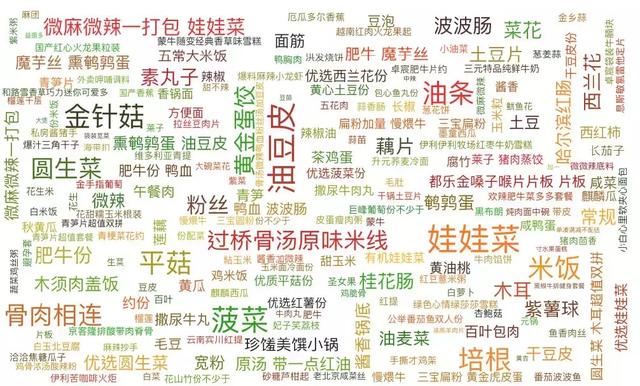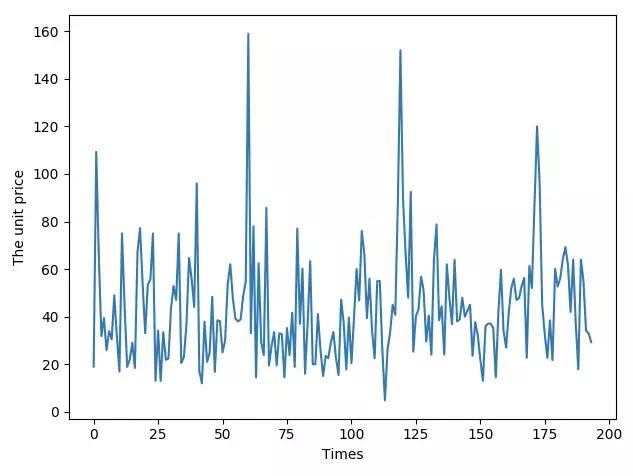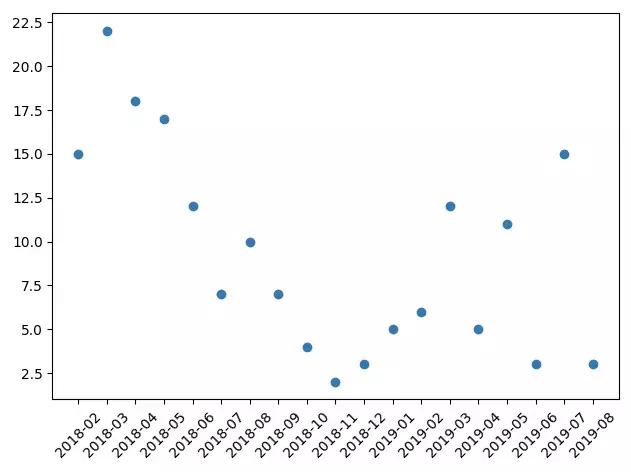您好,登錄后才能下訂單哦!
您好,登錄后才能下訂單哦!
本篇內容主要講解“怎么用Python顯示點過的外賣”,感興趣的朋友不妨來看看。本文介紹的方法操作簡單快捷,實用性強。下面就讓小編來帶大家學習“怎么用Python顯示點過的外賣”吧!
通過手機&驗證碼登錄自己的餓了么賬號,成功之后會返回當前用戶的user_id 和 登錄Cookie。這兩個信息為后續的請求提供必要的信息。
一開始訪問訂單,是這樣的請求
h6.ele.me/restapi/bos/v2/users/26803312/orders?limit=8&offset=0
h6.ele.me/restapi/bos/v2/users/26803312/orders?limit=8&offset=8
h6.ele.me/restapi/bos/v2/users/26803312/orders?limit=8&offset=16
當繼續下拉,出現"查看三個月前的外賣訂單"按鈕時,請求是這樣的
h6.ele.me/restapi/bos/v2/users/26803312/old_orders?limit=8&from_time=
h6.ele.me/restapi/bos/v2/users/26803312/old_orders?limit=8&from_time=1557718107
from_time的值在上次請求的響應中可以看到:

獲取訂單部分代碼如下所示:
"""
獲取近3個月訂單
"""
def get_new_order():
num = 0
while 1:
# 偏移量
offset = num * limit
response = requests.get(url + f'?limit={limit}&offset={offset}', headers=headers, verify=False)
resp_json = response.json()
insert_mongo(resp_json)
# 當響應訂單數小于8時 跳出循環
if len(resp_json) < 8:
print('====================')
break
num += 1
"""
歷史訂單
"""
def history_order():
from_time = ''
while 1:
response = requests.get(old_url + f'?limit={limit}&from_time={from_time}', headers=headers, verify=False)
resp_json = response.json()
from_time = resp_json['from_time']
orders = resp_json['orders']
# 經過測試,最后一個訂單時,會在請求一次 響應為空
if not orders:
break
insert_mongo(orders)運行之后發現,這一年多的時間,光外賣竟然花費了1W多一點。爬取的數據可以選擇將數據保存在csv文件中,也可以選擇Mongod。這里我是插入到了MongoDB中。
def insert_mongo(resp_json):
if not resp_json:
return
for i in resp_json:
# 菜品
foods_group = i['basket']['group'][0]
for j in foods_group:
j['name'] = clean_data(j['name'])
with open('foods_name_banxia.txt', 'a+') as f:
f.write(j['name'] + '\n') # 將菜品寫入文件,方便處理 # 配送費
deliver_price = 0
if 'deliver_fee' in i['basket'].keys():
deliver_price = i['basket']['deliver_fee']['price']
# 計算總花費
global total
total += i['total_amount']
# 餐館名
restaurant_name = clean_data(i['restaurant_name'])
with open('restaurant_name_banxia.txt', 'a+') as f:
f.write(restaurant_name + '\n') # 記錄餐館名
clo.insert_one({
# 餐館名
'restaurant_name': restaurant_name,
# 訂單時間 formatted_created_at也可以取,但是近期的會顯示xx小時之前
'created_timestamp': time_convert(i['created_timestamp']),
# 價格
'total_amount': i['total_amount'],
'foods_group': foods_group,
'deliver_price': deliver_price
})在查看數據過程中,發現有的菜品和店鋪名后面都有括號、或者方括號等特殊字符,里面的信息對我們來說也沒有什么價值。可以簡單的進行處理一下。
import re
def clean_data(data):
a = re.sub("\\(.*?\\)|\\(.*?\\)|\\[.*?\\]|\\【.*?\\】|[A-Za-z0-9\@\\!\/]", "", data)
a = a.replace('盒', '').replace('克', '').replace('個', '')\
.replace('大份', '').replace('小份', '').replace('瓶', '').replace('組', '').replace(' ','')
return a這樣,我們就將訂單中的信息存在了數據庫中。為了方便統計我將每個訂單的菜品、以及餐館名保存在了txt文件中。
可以通過wordcloud將餐品進行一個簡單的可視化。
from random import randint
from matplotlib import pyplot as plt
from wordcloud import WordCloud
def random_color(word=None, font_size=None, position=None, orientation=None, font_path=None, random_state=None):
"""Random Color func"""
r = randint(30, 255)
g = randint(30, 180)
b = int(100.0 * float(randint(60, 120)) / 255.0)
return "rgb({:.0f}, {:.0f}, {:.0f})".format(r, g, b)
content = open('foods_name.txt', encoding='utf-8').read()
wordcloud = WordCloud(background_color="white",
width=1000,
height=600,
max_font_size=50,
font_path='/System/Library/Fonts/PingFang.ttc', # 需要根據實際操作系統更換路徑
color_func=random_color).generate(content)
plt.imshow(wordcloud)
plt.axis("off")
plt.savefig('ele_wordcloud.png', format='png', dpi=200)結果如下,有沒有口味一樣的同學呢?

同樣我們可以在終端通過sort命令去常光顧的餐館進行統計。
sort -n 按照數值大小排序 升序
sort -r 降序排列
uniq -c 去重和統計
head -5 展示前5條
cat mao_out.txt | sort | uniq -c | sort -rg | head -5
結果如下 去的最多的是貢貢米線和張亮麻辣燙,統計范圍內均光顧了14次。
Python3XXXAir:$ cat restaurant_name.txt |sort|uniq -c| sort -rg| head -5 14 貢貢米線 14 張亮麻辣燙 13 京客隆 11 沁香緣家常菜 11 小巷麻辣香鍋
可以通過matplotlib去統計一下每次定外賣的價格,并展示出來。
import pymongo
import matplotlib.pyplot as plt
client = pymongo.MongoClient('mongodb://localhost:27017/')
db = client['ele']
clo = db['info_banxia']
result = clo.find({})
y = [i['total_amount'] for i in result]
x = [i for i in range(len(y))]
plt.ylabel("The unit price")
plt.xlabel("Times")
plt.plot(x, y)
plt.show()結果圖:

可以看出,大部分價格在20 ~ 40 之間, 因為有時候為了滿減,大部分都是跟同事朋友一起拼單。偶爾超過這個范圍是買的水果、藥等一些商品。
從這些數據中,我們同樣得出,哪個月定外賣次數最為頻繁。
# 該月定外賣次數
count = []
for i in data:
ele_count = clo.count({'created_timestamp': re.compile(i)})
count.append(ele_count)
plt.scatter(data, count)
plt.xticks(rotation=45)
plt.show()
可以看出 18年3月定了22次外賣是最多的一次。11月份的時候定外賣次數最少。
到此,相信大家對“怎么用Python顯示點過的外賣”有了更深的了解,不妨來實際操作一番吧!這里是億速云網站,更多相關內容可以進入相關頻道進行查詢,關注我們,繼續學習!
免責聲明:本站發布的內容(圖片、視頻和文字)以原創、轉載和分享為主,文章觀點不代表本網站立場,如果涉及侵權請聯系站長郵箱:is@yisu.com進行舉報,并提供相關證據,一經查實,將立刻刪除涉嫌侵權內容。